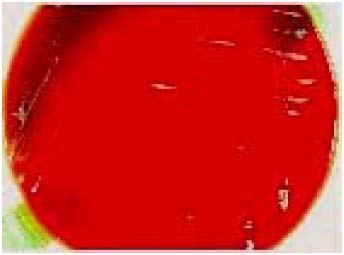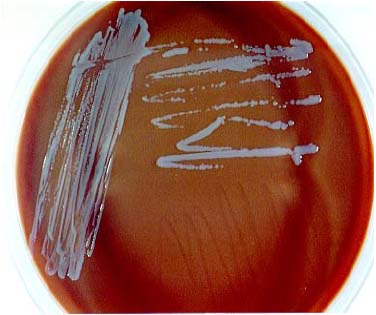Tularemia laboratory findings
|
Tularemia Microchapters |
|
Diagnosis |
|---|
|
Treatment |
|
Case Studies |
|
Tularemia laboratory findings On the Web |
|
American Roentgen Ray Society Images of Tularemia laboratory findings |
|
Risk calculators and risk factors for Tularemia laboratory findings |
Editor-In-Chief: C. Michael Gibson, M.S., M.D. [1]
Laboratory Findings
 |
 |
- Stains and smears: Gram stain
- Procedure: Perform Gram stain procedure/quality control per standard laboratory protocol.
- Characteristics: Staining of F. tularensis often reveals the presence of tiny, 0.2-0.5-μm X 0.7-1.0 μm, pleomorphic, poorly staining, gram-negative coccobacilli seen mostly as single cells. The gram stain interpretation may be difficult because the cells are minute and faintly staining. F. tularensis cells are smaller than Haemophilus influenzae. Bipolar staining is not a distinctive feature of F. tularensis cells.
- Additional work: Another smear may be prepared for referral to your state public health laboratory.
- Cultures
- Established inoculation and plating procedures are used. For tissues, established laboratory procedure is used to inoculate media (e.g., grind, touch-preparation, or a sterile wood stick). Plates are taped shut in 2 places to prevent inadvertent opening (alternate to taping is acceptable).
- Incubation of cultures.
- Temperature: 35-37°C
- Atmosphere: Ambient, use of 5% CO2 is acceptable.
- Length of incubation: primary plates are held for 5 days. If it is known that patient has been treated with bacteriostatic antibiotics, then plates are held for up to 7 days to allow bacteria recovery time.
- Characteristics: F. tularensis grows in commercial blood culture media. These organisms require cysteine supplementation; therefore, F. tularensis may at first grow on SBA, but upon subsequent passage will fail to grow on standard SBA. On cysteine supplemented agar plates, it is a gray-white, opaque colony, usually too small to be seen at 24 h on most general media such as CA, TM, and BCYE. After incubation for 48 h or more, colonies are about 1-2 mm in diameter, white to grey to bluish-grey, opaque, flat, with an entire edge, smooth, and have a shiny surface. F. tularensis will not grow on MacConkey or EMB plates.
- Biochemical reactions/tests
- Procedure: Use established laboratory procedures for catalase, oxidase,beta-lactamase, XV (or satellite), and urease tests.
- Interpretation: According to established laboratory practice.
- Additional notes: Commercial biochemical identification systems are not recommended at this stage.
- Rapid diagnostic testing for tularemia is not widely available. Physicians who suspect inhalational tularemia in patients presenting with atypical pneumonia, pleuritis, and hilar lymphadenopathy should promptly collect specimens of respiratory secretions and blood and alert the laboratory to the need for special diagnostic and safety procedures.
- F. tularensis may be identified through direct examination of secretions, exudates, or biopsy specimens using Gram stain, direct fluorescent antibody, or immunohistochemical stains. Microscopic demonstration of F. tularensis using fluorescent-labeled antibodies is a rapid diagnostic procedure performed in designated reference laboratories in the National Public Health Laboratory Network; test results can be available within several hours of receiving the specimens, if the laboratory is alerted and prepared.
- Growth of F. tularensis in culture is the definitive means of confirming the diagnosis of tularemia. It can be grown from pharyngeal washings, sputum specimens, and even fasting gastric aspirates in a high proportion of patients with inhalational tularemia. It is only occasionally isolated from blood.